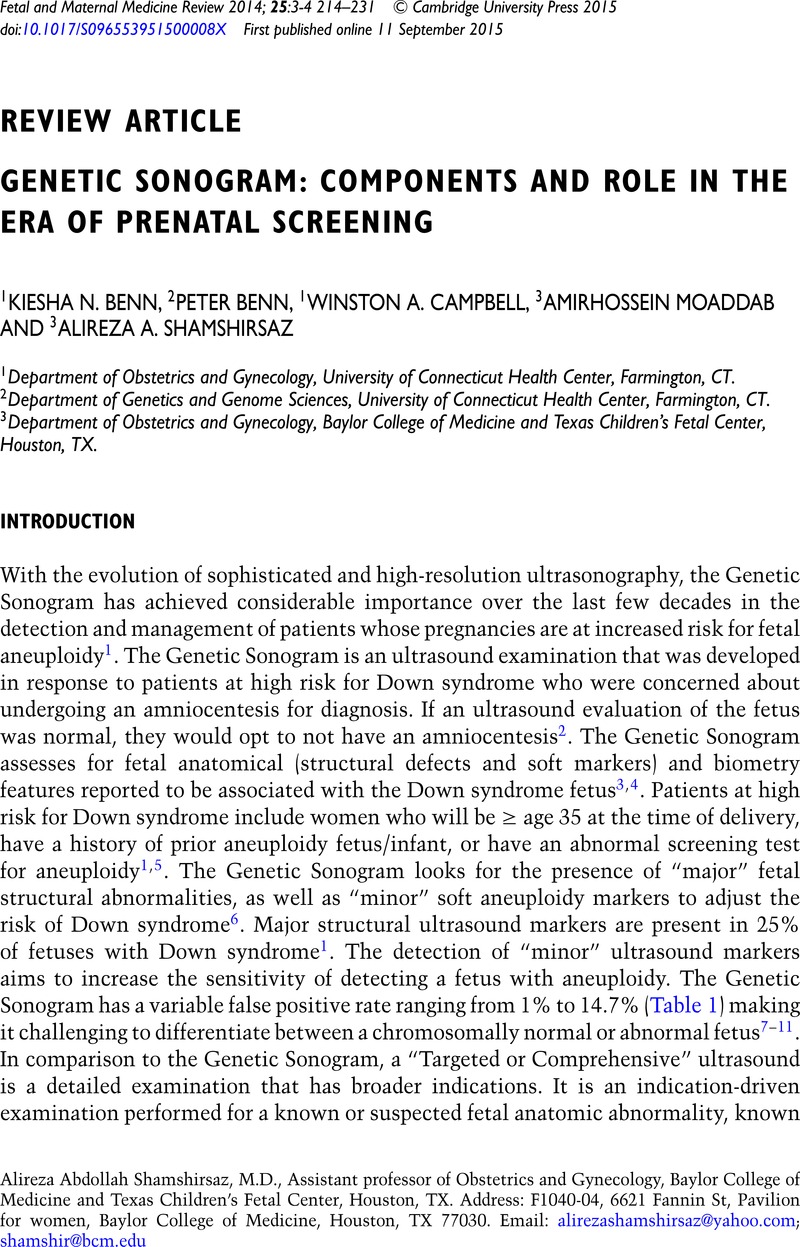Crossref Citations
This article has been cited by the following publications. This list is generated based on data provided by Crossref.
Moaddab, Amirhossein
Nassr, Ahmed A.
Belfort, Michael A.
and
Shamshirsaz, Alireza A.
2017.
Ethical issues in fetal therapy.
Best Practice & Research Clinical Obstetrics & Gynaecology,
Vol. 43,
Issue. ,
p.
58.
Belfort, Michael A.
and
Shamshirsaz, Alireza A.
2021.
Genetic Disorders and the Fetus.
p.
1050.
Petrovic, Bojana
Joksimovic, Jovana
Sljivancanin, Dragisa
Joksimovic, Luka
Drinic, Aleksandra
and
Stamenkovic, Jelena
2022.
Ultrasound markers of chromosome aberrations on routine second trimester screening.
Genetika,
Vol. 54,
Issue. 2,
p.
921.
Liehr, Thomas
Harutyunyan, Tigran
Williams, Heather
and
Weise, Anja
2022.
Non-Invasive Prenatal Testing in Germany.
Diagnostics,
Vol. 12,
Issue. 11,
p.
2816.
Petrovic, Bojana
Milicevic, Srboljub
Sljivancanin, Dragisa
Zdelar Stojanovic, Ljiljana
Stamenkovic, Jelena
Grk, Milka
and
Dusanovic Pjevic, Marija
2024.
The likelihood of detecting abnormal karyotypes in fetuses with a single major anomaly or “soft” marker on ultrasonographic scanning.
Clinical Dysmorphology,
Vol. 33,
Issue. 3,
p.
137.





